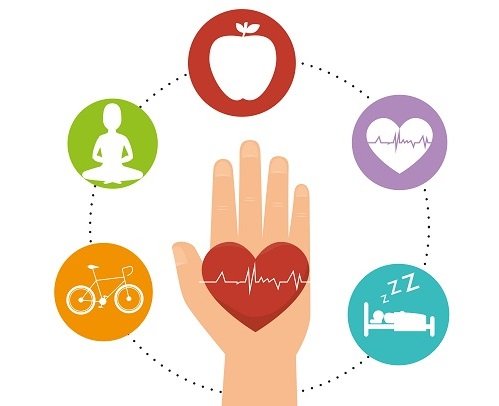Building Willpower: A Science-Based Guide to Achieving Your Goals

Updated at: 2025-05-27 10:28:42 (6 months ago by Melkisedeck Leon Shine)
Fortifying Self-Control: A Neuroscience-Based Approach to Goal Attainment
Human endeavors, whether athletic excellence, academic achievement, or behavioral modification, frequently encounter the obstacle of sustained commitment. This article explores the neurological underpinnings of willpower and presents evidence-based strategies for enhancing self-regulation and achieving ambitious goals. We will define key concepts like self-efficacy, goal-setting theory, and the strength model of self-control, integrating them with practical applications.
1. The Neurological Basis of Willpower and Self-Regulation:
Willpower is not simply a matter of determination but a complex cognitive function primarily governed by the prefrontal cortex (PFC). The PFC, responsible for executive functions such as planning, decision-making, and inhibitory control, plays a crucial role in self-regulation. Understanding the PFC's limited resource capacity—as described by the strength model of self-control—is fundamental to effective willpower management. This model posits that self-control is a finite resource that depletes with use and requires replenishment through rest and recovery. Overextending self-control can lead to ego depletion, reducing the capacity for subsequent self-regulatory tasks. Therefore, strategic resource allocation is crucial.
2. Goal Setting and the SMART Framework:
Effective goal setting is paramount. Locke's goal-setting theory emphasizes the importance of specific, measurable, achievable, relevant, and time-bound (SMART) goals. Vague aspirations are counterproductive; clearly defined, written goals increase commitment and provide a tangible roadmap for progress. Regular review fosters accountability and maintains focus, reinforcing self-efficacy—the belief in one's ability to succeed—a critical component of successful self-regulation.
3. Incremental Goal Progression and the Importance of Small Wins:
Overambitious goals can induce feelings of overwhelm and demotivation. Employing a decomposition strategy—breaking down large objectives into smaller, manageable tasks—allows for a gradual progression, facilitating a sense of accomplishment with each milestone. This strategy aligns with Bandura's social cognitive theory, where self-efficacy is strengthened through successive approximations. The cumulative effect of these “small wins” generates positive reinforcement, bolstering motivation and sustaining momentum towards the ultimate goal.
4. Prioritization and Resource Allocation:
Resource allocation is critical given the limited capacity of self-control. Prioritization, through techniques like Eisenhower Matrix, helps to focus energy on high-impact tasks aligned with overarching goals. This selective allocation prevents resource depletion and minimizes the risk of burnout, maximizing the likelihood of success.
5. Cultivating Self-Discipline:
Self-discipline, the consistent exercise of self-control, is fundamental to willpower. It involves delaying gratification and choosing actions congruent with long-term objectives. This process, analogous to physical training, strengthens self-regulatory capacity over time. Regular practice reinforces neural pathways associated with self-control, enhancing the ability to resist impulsive behaviors and strengthen self-efficacy.
6. Environmental Design and Temptation Management:
Minimizing exposure to environmental cues that trigger impulsive behaviors is crucial. For example, removing junk food from one's home environment reduces the temptation to engage in unhealthy eating habits. This strategy leverages the principles of operant conditioning, reducing the likelihood of undesired behaviors through environmental manipulation.
7. Harnessing Intrinsic Motivation:
Intrinsic motivation, driven by internal rewards rather than external pressures, is a powerful driver of sustained effort. Identifying and leveraging personally meaningful goals and rewards (e.g., visualization, positive self-talk, or small, meaningful treats) is crucial for maintaining long-term commitment and preventing motivational setbacks.
8. Optimizing Energy Management:
Recognizing the finite nature of willpower necessitates strategic energy management. Scheduling demanding tasks during peak energy periods and incorporating regular breaks to prevent ego depletion are essential. This approach aligns with the strength model of self-control, emphasizing the importance of resource replenishment.
9. Mindfulness and Enhanced Self-Awareness:
Mindfulness practices cultivate self-awareness, enabling better recognition of impulsive urges and emotional states. This heightened awareness enhances self-control and reduces the likelihood of acting on fleeting impulses. Mindfulness facilitates the development of metacognitive skills, crucial for effective self-regulation.
10. Leveraging Technology and Support Systems:
Utilizing technology (e.g., habit-tracking apps, meditation apps) and fostering supportive relationships are valuable strategies. These tools enhance accountability and provide encouragement, buffering against setbacks and fostering resilience. Social support, as highlighted in social cognitive theory, plays a significant role in maintaining motivation and achieving goals.
11. The Importance of Sleep and Adequate Rest:
Sufficient sleep is crucial for optimal cognitive function, including self-control and decision-making. Sleep deprivation impairs executive functions, reducing willpower and increasing susceptibility to impulsive behaviors. Prioritizing adequate sleep is essential for maintaining effective self-regulation.
12. Visualization and Positive Reinforcement:
Visualization, a mental rehearsal technique, enhances motivation by mentally practicing success. Combining this with positive reinforcement—acknowledging and rewarding progress—maintains motivation and strengthens self-efficacy throughout the process.
Conclusions and Recommendations
Developing robust willpower is a multifaceted process requiring a holistic approach encompassing neurological understanding, strategic goal setting, self-discipline, environmental management, and resource optimization. The presented strategies, rooted in established psychological theories and models, offer a practical framework for enhancing self-regulation and achieving personal goals. Future research could explore the interplay between different self-control strategies, investigating optimal combinations for diverse populations and goal types. The effectiveness of these strategies could be further enhanced by incorporating personalized interventions tailored to individual needs and preferences. A deeper understanding of the neural mechanisms underlying willpower, alongside advancements in technology and intervention techniques, will greatly benefit the development of more effective and personalized approaches to self-regulation. The practical implications of these findings are wide-ranging, applicable across various domains of life, from health and wellness to academic and professional pursuits.
Reader Pool: What are the potential limitations of applying these strategies in real-world settings, and how could these limitations be addressed?


